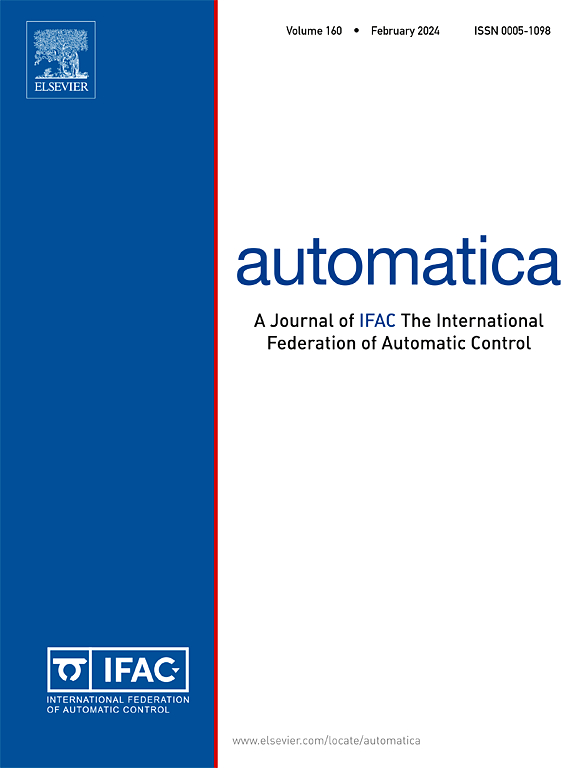模式形成使用内在最优控制方法
IF 5.9
2区 计算机科学
Q1 AUTOMATION & CONTROL SYSTEMS
引用次数: 0
摘要
本文研究了给定交互拓扑模型的多智能体系统的模式形成控制问题,从n个智能体中选择m个作为领导者,并向每个领导者添加控制信号。这些代理在图上通过拉普拉斯动力学相互作用。将模式形成控制问题表述为一个内禀无限时界线性二次型最优控制问题,即目标函数中不包含误差信息。在温和条件下,我们证明了最优控制策略的存在性和收敛性。在最优控制策略的基础上,提出了一种分布式控制策略来实现给定的模式。最后通过数值模拟对理论结果进行了验证。本文章由计算机程序翻译,如有差异,请以英文原文为准。
Pattern formation using an intrinsic optimal control approach
This paper investigates a pattern formation control problem for a multi-agent system modeled with given interaction topology, in which of the agents are chosen as leaders and consequently a control signal is added to each of the leaders. These agents interact with each other by Laplacian dynamics on a graph. The pattern formation control problem is formulated as an intrinsic infinite time-horizon linear quadratic optimal control problem, namely, no error information is incorporated in the objective function. Under mild conditions, we show the existence of the optimal control strategy and the convergence to the desired pattern formation. Based on the optimal control strategy, we propose a distributed control strategy to achieve the given pattern. Finally, numerical simulation is given to illustrate theoretical results.
求助全文
通过发布文献求助,成功后即可免费获取论文全文。
去求助
来源期刊

Automatica
工程技术-工程:电子与电气
CiteScore
10.70
自引率
7.80%
发文量
617
审稿时长
5 months
期刊介绍:
Automatica is a leading archival publication in the field of systems and control. The field encompasses today a broad set of areas and topics, and is thriving not only within itself but also in terms of its impact on other fields, such as communications, computers, biology, energy and economics. Since its inception in 1963, Automatica has kept abreast with the evolution of the field over the years, and has emerged as a leading publication driving the trends in the field.
After being founded in 1963, Automatica became a journal of the International Federation of Automatic Control (IFAC) in 1969. It features a characteristic blend of theoretical and applied papers of archival, lasting value, reporting cutting edge research results by authors across the globe. It features articles in distinct categories, including regular, brief and survey papers, technical communiqués, correspondence items, as well as reviews on published books of interest to the readership. It occasionally publishes special issues on emerging new topics or established mature topics of interest to a broad audience.
Automatica solicits original high-quality contributions in all the categories listed above, and in all areas of systems and control interpreted in a broad sense and evolving constantly. They may be submitted directly to a subject editor or to the Editor-in-Chief if not sure about the subject area. Editorial procedures in place assure careful, fair, and prompt handling of all submitted articles. Accepted papers appear in the journal in the shortest time feasible given production time constraints.
 求助内容:
求助内容: 应助结果提醒方式:
应助结果提醒方式:


